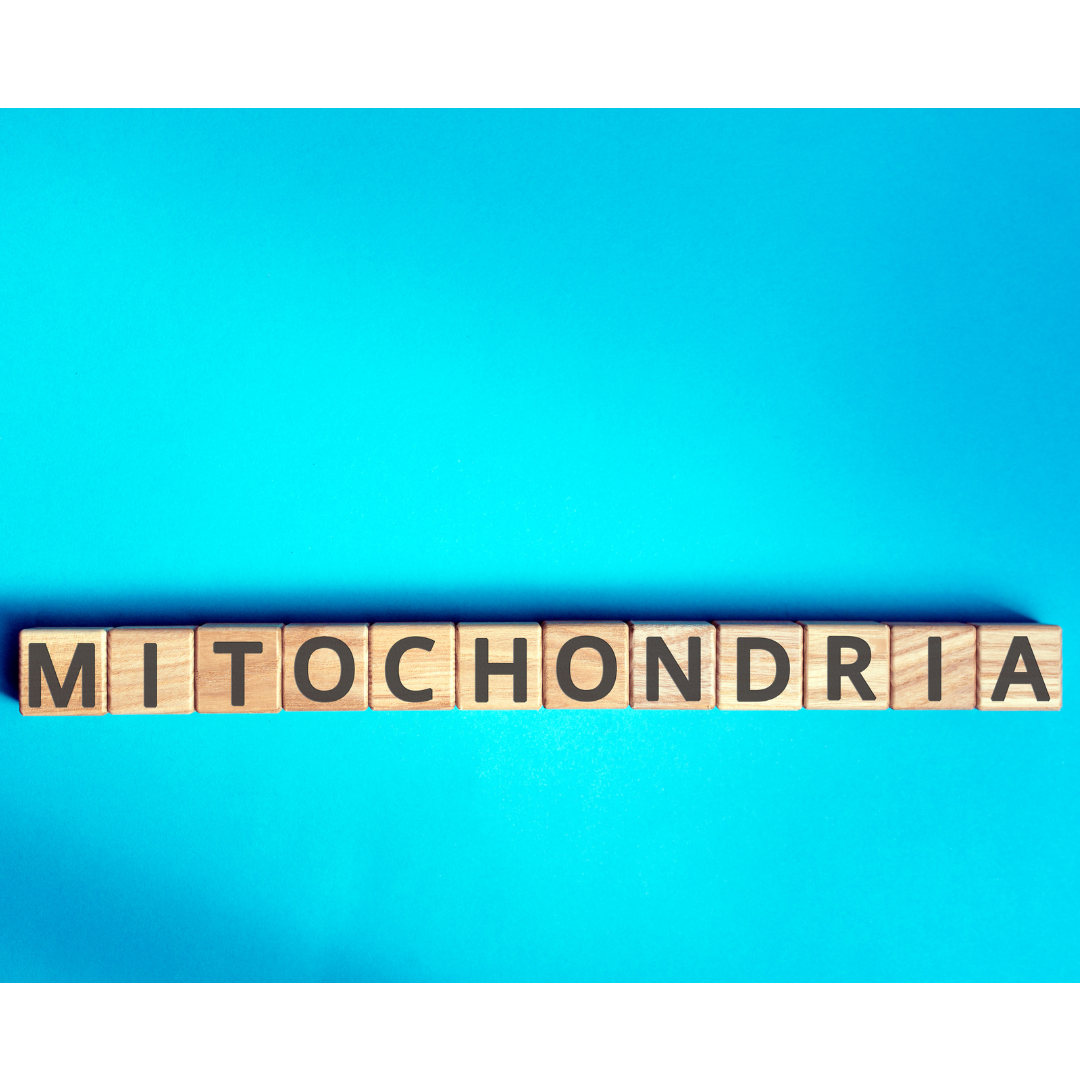
Prioritizing Your Mitochondria
Mitochondria are considered the “powerhouses” of the cell.
These organelles, which have their own set of DNA, are believed to be derived from bacteria that took up residence in our cells and provided a symbiotic relationship. Every cell has large numbers of mitochondria however, the cells which produce the greatest energy, like your brain and heart, have the highest concentration.
Mitochondria convert food and oxygen to energy in the form of ATP, or adenosine triphosphate. This is the energy source your body uses to fuel almost every biochemical process. During the process of ATP production free radicals or reactive oxygen species are made. This is a normal process and when we are healthy, we can remove these potentially damaging products before significant damage occurs. As we age, however, mitochondria produce less ATP, and more of these reactive oxygen species, which can lead to damage to the cells through inflammation, can build up in the cell. In addition to aging other lifestyle and dietary factors can add to the buildup of these toxic reactive species and lead to mitochondrial dysfunction. Optimally older mitochondria should be replaced by younger mitochondria, but this process appears to be affected by a multitude of factors as well. What scientists are now realizing is this process of mitochondrial aging and death is not a guarantee and in the right conditions can be altered.
The factors which determine mitochondrial aging are complex but do relate to the actions of our genes and how they are affected by external forces-specifically epigenetics. Epigenetics refers to the fact that our genes are directly influenced by our environment. This is in contradiction to what scientists previously believed and now we know our genes are not our destiny. Current research has shown our genes can be turned off or turned on based on external factors. Optimal mitochondrial functioning is directly related to our genes.
Mitochondrial function is determined by several factors including our telomeres, sirtuins, AMPK, and mTOR. I know it may sound like you just landed in a Biochemistry 300 level class, but it is important to understand the science at least at a basic level to be empowered to make a change. These factors are considered the longevity pathways (sirtuins, AMPK, mTOR) and have evolved over time to protect and repair the body in times of damage or adversity. We are learning that when they are activated they can have profound effects on our mitochondrial functioning and thus our healthspan ( longer life with less disease).
Telomeres are the protective tips of our chromosomes.
Many scientists compare them to the ends of our shoelaces. When they are damaged or wear off the shoelaces start to fray and come apart. As we age the telomeres shorten and eventually when they are gone the cell dies due to chromosomal damage. So as our telomeres shorten, we die-short telomeres equal shortened lifespan- it’s that simple. Researchers have found when cells are placed in a petri dish they will replicate and divide 40-60 times until their telomeres become very short. An enzyme called telomerase can extend the length of telomeres and when added to the cultured cells, the addition allows them to defy the aging process. We know telomeres shorten slowly as we age but recently researchers have related different factors which can contribute to more rapid shortening (smoking, radiation, toxins, diabetes, and blood sugar disruptions) and more importantly to factors that may slow or even reverse this process. Mitochondrial function is directly related to the shortening of our telomeres. As they shortened the functioning and replacement of mitochondrial decreases as well.
Sirtuins are a class of enzymes that are involved in DNA/chromosome repair and restoration.
Sirtuins have recently been a hot topic of research with regards to aging and longevity. They are products of the SIRT genes, specifically SIRT1 and SIRT3, though there are many more. These enzymes can be considered the emergency response team. They are made in response to damage to the DNA, like what would occur in response to radiation. The damage can trigger the team to jump into action and through a series of reactions repair the damaged areas. These genes can get turned on and off as well depending on the environment. Much of the longevity and aging research has uncovered how these genes can also directly affect mitochondrial function through the action of the enzymes and their ability to remove the ROS species which can damage the mitochondria. The genes and their produced enzymes are also responsible for the factors that improve insulin and insulin sensitivity, brain health and function, and muscle growth, and muscle mitochondrial functioning.
AMP-activated protein kinase (AMPK) is another evolving area in mitochondrial health. It has been termed the metabolic control enzyme and is activated in response to low energy levels. When this enzyme is activated, it is responsible for mitochondrial biosynthesis or the production of new mitochondria. AMPK is also an important player in other anti-aging factors like angiogenesis (growth of new blood cells) and reduction of inflammation and fat storage. Factors that increase the activity of AMPK involve hormesis or short stressors like what is achieved with intermittent fasting or calorie restriction or HIIT training (bursts of high-intensity exercise for short periods of time)
The Rapamycin process (mTOR) has also received a great deal of attention in longevity research.
mTOR has been termed the master driver of cell growth. mTOR is important for regulating cell growth, protein synthesis, mitochondrial dysfunction, cell senescence, and more. This enzyme is very sensitive to nutrients and to the effects of insulin and blood sugar. Activation of the mTOR pathway can occur in times of stress and can be positive, but when the actions are inhibited mTOR can reduce cell repair and energy. In the short term, this can be protective to help the body survive a stressor but over time it can be dysfunctional.
Another contributor to mitochondrial dysfunction is the increased presence of what are termed senescent cells. Senescent cells are cells that are older, non-functioning cells often termed zombie cells. In an optimally functioning organism ( or person )these cells die and are removed in a process called autophagy. Autophagy is the body’s process of cleaning up dead or non-functioning cells. When an organism is working optimally the cleanup crew removes the dead or dying cells so they can be replaced by new optimally functioning cells. This same process can occur with mitochondria. When they are no longer functioning optimally, they are removed and replaced. If they are not removed over time they can lead to mitochondrial dysfunction and death by releasing large quantities of ROS (reactive oxygen species ) directly driving inflammation, cell damage, and ultimately cell aging and death.
Mitochondrial health is directly related to the actions of our telomeres, AMPK, mTOR, and the presence (or absence) of senescent cells. When we look to optimize our mitochondrial functioning, we can look at factors and nutrients that affect these drivers.
Interventions can be directed at the following:
- Diet: A diet that is devoid of processing, refined sugars and artificial chemicals has been shown to optimize mitochondrial function and overall health. If you need a place to start, check out our programs to help you address this important component to achieving mitochondrial health. (Adopting a Whole-Foods Plant-Based Diet, Build Your Foundation and Food as Medicine)
- The process of hormesis is short bursts of stress followed by periods of recovery. Examples of hormesis include calorie restriction, intermittent fasting or the Fasting Mimicking diet (Valter Longo), High-Intensity Interval Training or short stressors like exposures to cold or heat. Exercise is important to many factors of health but balancing exercise between HIIT training, muscle building and restoration practices like yoga and tai chi can optimize mitochondrial functioning. (Consider a HIIT class with Mary Dare Mayeaux in the Thrive Fitness area to bump up your hormesis and increase your mitochondria)
- Sleep-Sleep improves every facet of health. Lack of sleep can drive up insulin, inflammation, and ROS levels all of which can significantly alter mitochondrial function. Sleep must be a priority. If you are struggling with sleep, check out our Sleep Fix program and resources to work on optimizing this crucial component of health.
- Supplements for Mitochondrial Support
No supplement can fix a poor diet, or days devoid of exercise and proper sleep but while you are working on optimizing these non-negotiable factors the following supplements have been shown to optimize mitochondrial function through reduction of ROS (reactive oxygen species or free radicals) or by amping up the activity of our longevity genes/enzymes. (check out our list of supplements to optimize mitochondrial health)There are no common tests for mitochondrial health but individuals who suffer from low mitochondrial functioning. Functional Medicine physicians often do some foundational labs to look for it and may also do a specialized test called an Oxidative Stress Panel ( Genova ) Patients with lower mitochondrial functioning can often complain of brain fog, low energy, chronic fatigue, headaches, muscle fatigue and exercise intolerance. The good news is the dysfunction can be reversed with dietary and lifestyle interventions.



